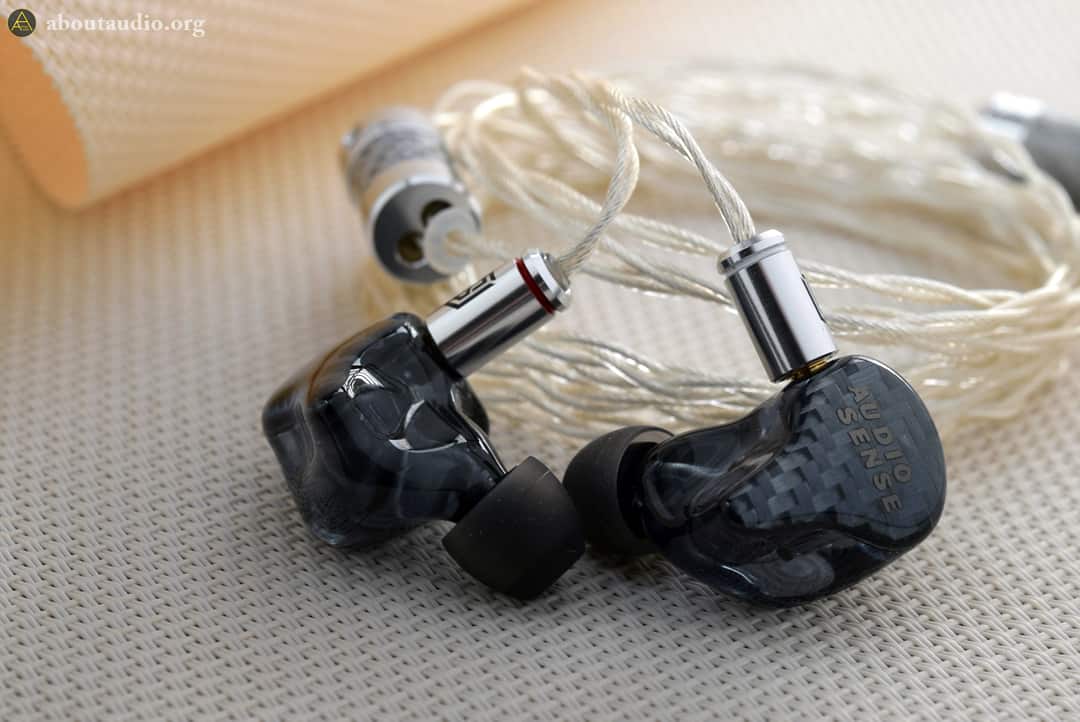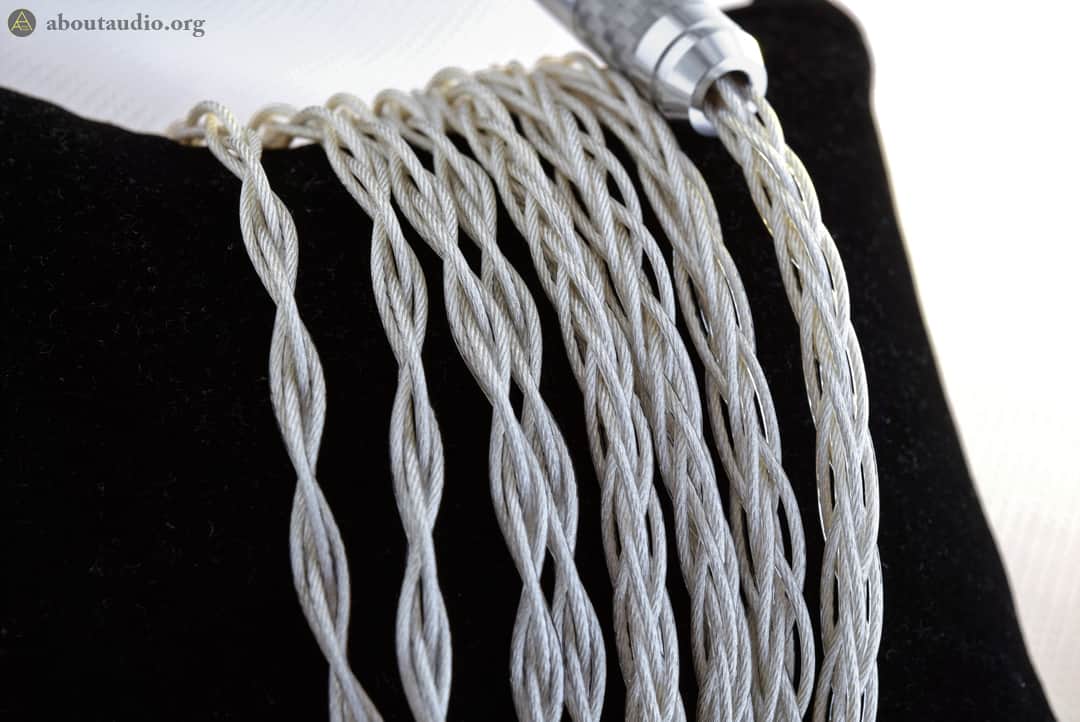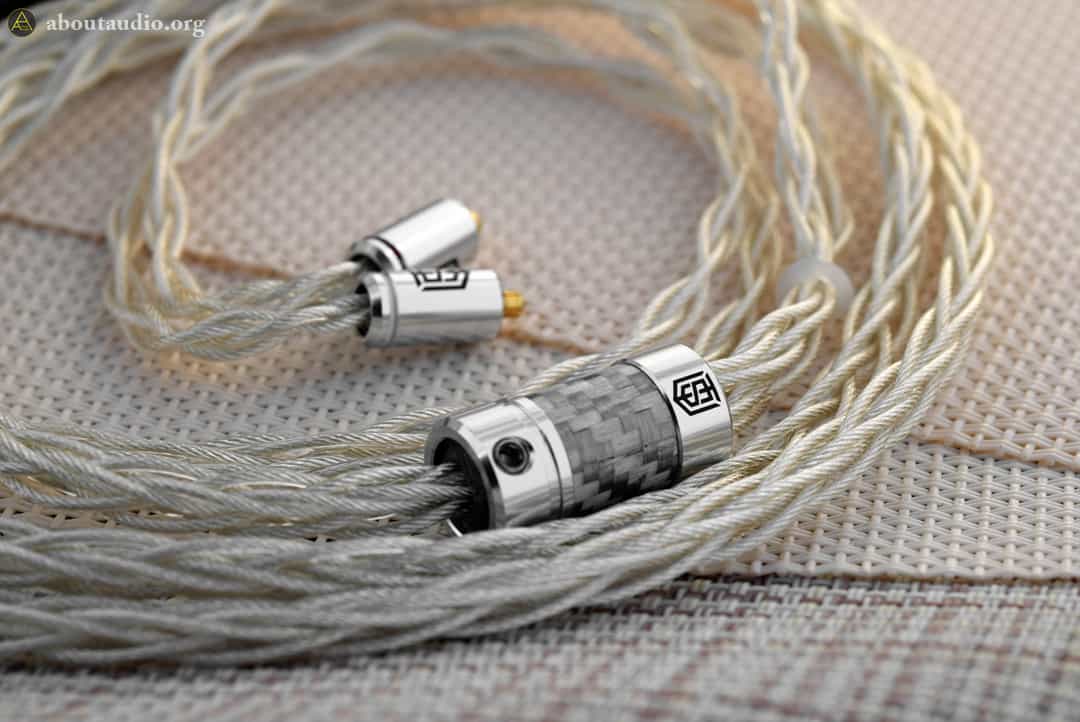
Satin Audio Hyperion Review: Silver but natural
Hyperion is a 7N Superior-Pure silver-plated copper Litz cable with a thickness of 28AWG and a Type 2 construction. What makes Hyperion be a skillful cable is that the tonality keeps its naturality while possessing the general characteristics we’d expect from an SPC cable – crispy, bright, and silvery atmosphere. Just as my expectation, Hyperion presents a silvery, shiny tone but mild in portion. It feels to be just the right amount to enrich the upper frequencies and texture without drying out or harshening the texture details. Both the low and high frequencies get tighter and denser, but this is also done gently, not to kill the natural reverbs from the original sound. Mids get up-closer with airy, splendid trebles.

Matching comparisons
Audiosense T800
The sound signature and the characteristics stay the same as the original but improved in the overall presentation. Mids sound more “opened” and spreads out with a better flow. Also, the tonality is now closer to neutral and the textures are more detailed while keeping the surface smooth. The bass quantity stays the same (decent mid-bass thud and well-controlled) though Hyperion provides a meatier sound ray as well as presenting the bass in a darker/thicker manner.
Tin HiFi P1
The overall sound signature stays the same, however with visibly better mids. Some of the bright sounding cables could mess up the imaging and naturality by excessively pulling out the mids apart from the other frequencies, but that isn’t the case here. The vocals a presented in a purer and clearer way without getting grainy or distorted. It’s a very natural boost, not disrupting the flow of the overall sound. The atmosphere turns into a happy, delightful tone along with shiny yet comfortable upper frequencies. I like how the mids get intensive and closer to the ears while preserving the neutral imaging.
QOA Pink Lady
The bass reproductions became much better – slightly increased in quantity with meatier/thicker sound ray. This is done in a gradual, gentle manner that doesn’t loosen the reverbs or make the atmosphere muddy. The bass also feels darker and well-settled on the lower end of the headroom, nicely supplementing the bass punch while preserving the original signature. Mids and highs stay mostly the same as the stock SPC cable did, but cleaner and well-organized. Hyperion would be an ideal choice for Pink Lady if you’re looking to add more body to the bass without altering the other frequencies.

Verdicts for Hyperion
Hyperion knows how much it should tighten and brighten the sound, bringing a visible improvement yet being sonically well-compatible with a variety of IEMs. Initially, the changes, or influences, may not be drastic as some vibrant sounding SPC cables, though the differences soon get clear as Hyperion blends into the sound in a careful, courteous attitude. Taking the careful approach sounds similar to Gaia, the one reviewed right before this, right? Though Hyperion sure keeps a clear distinction from Gaia, making it a very nice choice for those looking to add fun, crispiness, and shininess naturally.

Hyperion 8 – A big step further
Have I said having thicker braids are still very affordable for these? Titan series comes in with 4 braids as default, but you could increase the braids to 6 and 8 just by each adding $15 and $30 – which makes only $100.50 for an 8 braid. That is one hell of a deal. Besides, the 8 braided version is similar to other typical 4 braided cables in weight thickness as the wires on these are already slim and light. Let’s now cover Hyperion 8 and see what are the sonic differences compared to the default 4 braided Hyperion.

Compared to original Hyperion
Audiosense T800
The T800’s sound signature works well with SPC cables, yet the sound from the default cable sounds a tad thin and needs a cable that achieves thicker and bassier sound. Compared to the original Hyperion, Hyperion 8 delivers a significantly better presentation. The bass gains a fuller body with meatier strikes. I can now feel the weighty, punchy, and darker bass existence way better.
Mids become more wholesome, softer in texture, and increased in density. Showing a smoother transition throughout the mid-range as well as the brightness getting slightly dimmer are also the differences that I appreciate from Hyperion 8 (Note that the matter with brightness is relatively said as I compare with the original Hyperion). The headroom is larger both up and down with improved layering.
Tin HiFi P1
The overall dynamics get visibly livelier with more detailed layering and separation. Lows gain more color, weight, and extension. I’d say the center of gravity shifts a little lower and provides better stability. Mids gain a stronger driving force too. Vocals get thicker in density and larger phasing, though what I truly appreciate is that Hyperion 8 still won’t lose the airiness and shininess on the upper mids, despite the thicker presentation.
In fact, airiness is better than the original Hyperion as the reverbs feel more natural and has better composure. The trebles get snappier along with the textures getting more detailed and crispier. The strike and decay feel cleaner too. The headroom gains a good amount of improvement as well, in all four directions. I’d say it stretches further in sideways.
QOA Pink Lady
The overall thickness becomes more consistent with a fresher tonality. Along with the extension towards the lower ends gaining improvements, the bass becomes larger, deeper, and dynamic. Yet the bass reverbs don’t get loosen or bloated but stays clean. Hyperion 8 brings a positive change to the upper frequencies too.
I can tell there are more space and air to the upper ends, only to the point where it wouldn’t break the original balance. Mids sound cleaner with refined textures with the trebles getting snappier, richer, and colorful. I’m liking the Pink Lady + Hyperion 8 combination as the sound characteristics stay almost identical to original yet improved in every aspect.

Verdicts for Hyperion 8
While the original 4 braided Hyperion doesn’t particularly sound thin in the first place, Hyperion 8 is visibly fuller in body and richer in the overall presentation. The headroom feels wider and provides more spacing between the sound layers, making the separation clearer. To be frank, I’d gladly spend the reasonable extra price and upgrade to an 8 braid. The extra payment is much worth the sonic improvement. I’d also like to highlight that all 8 braids for Titan series don’t get overwhelming whatsoever thanks to its subtle nature. Hyperion 8 will be one of the best affordable choices for achieving clarity with a full-bodied sound.
Continued reviews for the Titan Series
Hyperion 4/8 Review (2/3)
RELATED REVIEWS
Thanks to Satin Audio for providing Hyperion 4/8 for an honest feedback/review.
I am not affiliated with Satin Audio and none of my words were modded or asked to be changed.



